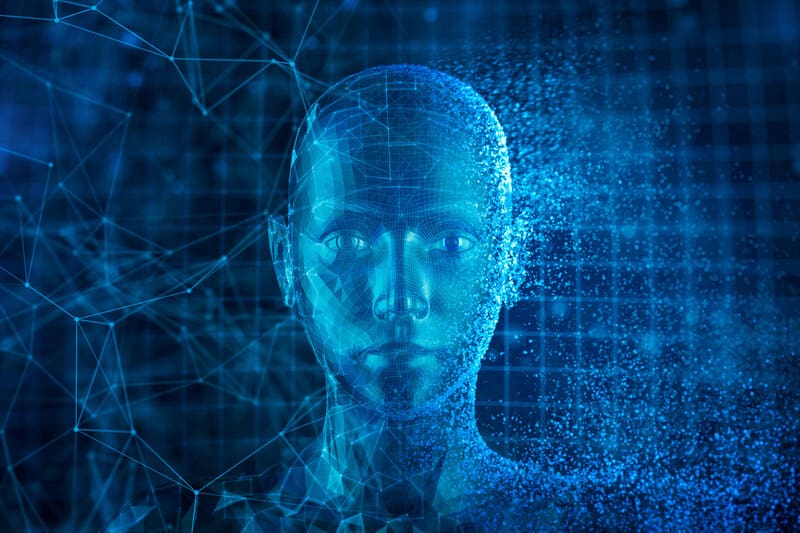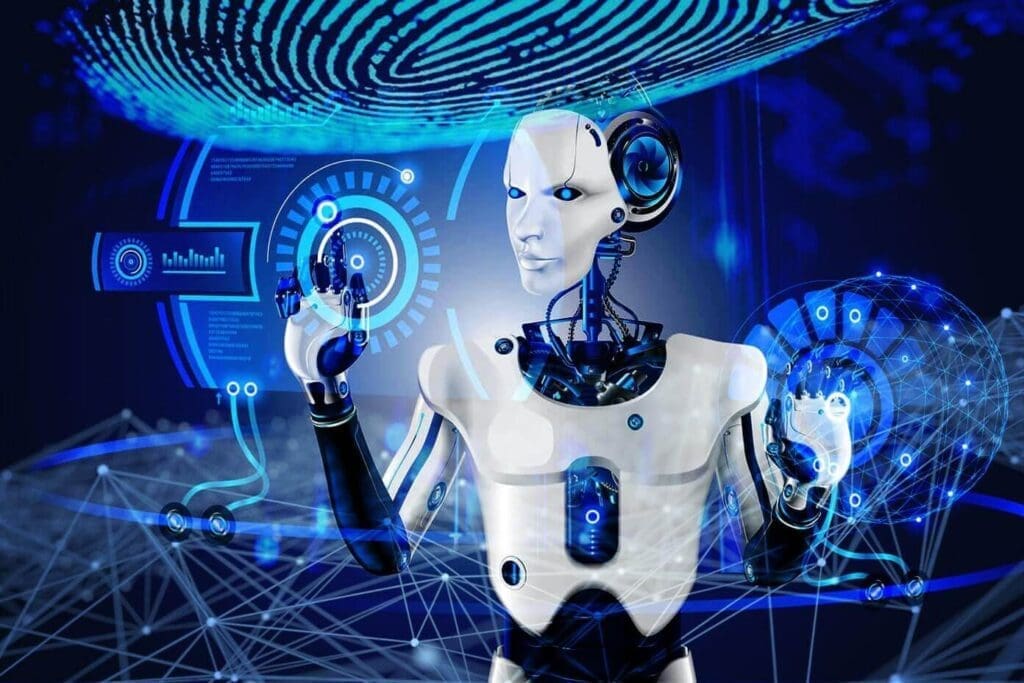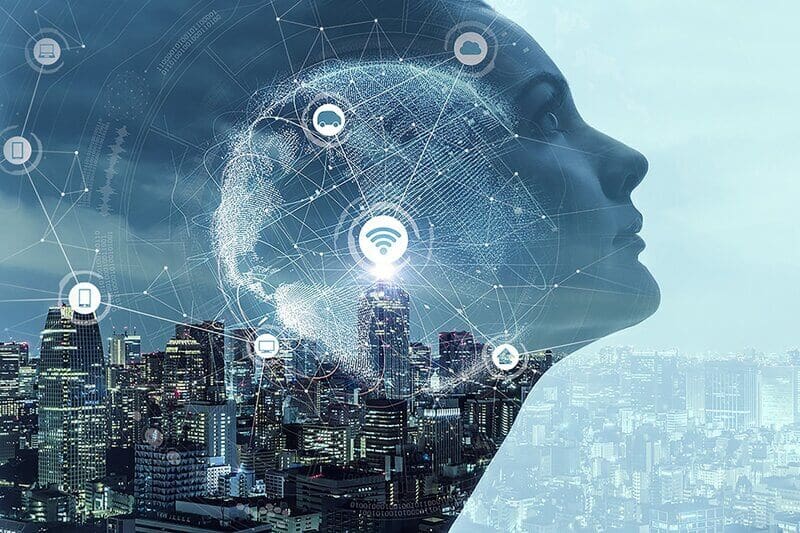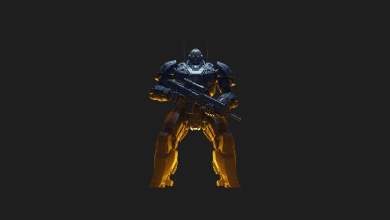
The origins of artificial intelligence (AI) trace back much further than many realize, with its conceptual seeds planted as early as the 1300s. This era introduced the earliest notions of logical thinking, setting the stage for AI’s development. Yet, it wasn’t until the 20th century, particularly post-1950s, that AI began to emerge as a distinct field and started to shape the technological landscape.
AI’s evolution has been monumental, reshaping numerous sectors and becoming a ubiquitous presence in everyday life. The journey from its theoretical underpinnings in the mid-20th century, through the creation of the first computing machines and algorithms that mimicked human intelligence, marks a fascinating trajectory of growth and innovation.
This rapid evolution was driven by breakthroughs in computer science, the explosion of data, and advancements in algorithms, propelling AI into the forefront of a myriad of applications. Today, AI’s impact is evident in healthcare, where it assists in diagnosis and treatment; in transportation, through the development of autonomous vehicles; in entertainment, by personalizing content; and in daily tasks, via intelligent personal assistants. AI’s journey underscores its transformative impact on contemporary society, highlighting its role in driving forward a range of technological and societal advancements.
History and examples of artificial intelligence

The earliest example of artificial intelligence was introduced by the Spanish philosopher Ramon Llull, who published the book “Ars Generalis Ultima” (The Ultimate General Art). This work demonstrated how new knowledge could be created through the combination of concepts. Following this, mathematicians like Gottfried Leibniz in 1666 and Thomas Bayes in 1763 further developed these ideas.
The first artificial intelligence program and the AI Winter period

Research in artificial intelligence has primarily focused on developing computer programs that can perform tasks usually carried out by humans. A significant early milestone in this field was the creation of the “Logic Theorist” by Allen Newell and Herbert A.
Simon in 1955. This groundbreaking program was among the first to demonstrate that machines could be programmed to prove mathematical theorems, showcasing AI’s potential for complex problem-solving.
However, the AI field faced considerable challenges during the 1960s, a period often described as the “AI Winter.” This time was marked by a deceleration in progress due to excessively optimistic forecasts and the limitations of the computing technology then available. This era emphasized the intricacies and obstacles in advancing AI research, highlighting the discrepancy between ambitions and technological capabilities.
Artificial intelligence that defeated the World Chess Champion

During the 1990s, the scope of artificial intelligence (AI) applications saw considerable expansion, branching into areas like natural language processing, computer vision, and robotics. This period was also marked by the rise of the internet, which significantly propelled AI research by offering unprecedented access to large datasets.
A notable highlight of this era was IBM’s Deep Blue, an AI system that achieved a remarkable feat by defeating Garry Kasparov, the reigning World Chess Champion. This victory underscored AI’s capabilities in strategic analysis and complex problem-solving, marking a pivotal moment in the evolution of artificial intelligence.
Generative artificial intelligence (ChatGPT) and beyond

The 21st century, on the other hand, has witnessed the greatest development of artificial intelligence technologies. In 2011, IBM’s Watson tool demonstrated the ability to understand complex questions using natural language processing and machine learning, creating Jeopardy! He won a TV contest called
Companies such as Google and Meta, on the other hand, have invested in generative artificial intelligence and launched user-facing applications. In addition, ChatGPT-like tools have leapt into everyday use.
So what do you think about the history of artificial intelligence? You can share your views with us in the comments section.
Today’s artificial intelligence emerged in the 1950s with the concept of “machines that can mimic human intelligence” by computer scientists. The researchers, who met at the Dartmouth Conference in 1956, wanted to define goals in this area. This was called “artificial intelligence”.
Artificial Intelligence Timeline

Artificial Intelligence Timeline PDF DOWNLOAD >>
The Electronic Brain – 1943
In 1943, Warren S. McCulloch and Walter H. Pitts published a seminal paper titled “A Logical Calculus of Ideas Immanent in Nervous Activity”. This work laid one of the foundational stones for artificial intelligence, presenting one of the first theoretical models of neural networks and modern computer science.
The paper proposed that simple artificial neural networks could perform specific logical operations, contributing to the understanding of brain functions. McCulloch and Pitts’ work is regarded as a significant turning point in the fields of artificial intelligence and cognitive science.
Computing Machinery And Intelligence – 1950

In 1950, two significant events in the field of artificial intelligence and science fiction occurred. Alan Turing published his groundbreaking paper “Computing Machinery and Intelligence,” which laid the foundation for the field of artificial intelligence. In this paper, Turing proposed the concept of what is now known as the Turing Test, a method to determine if a machine can exhibit intelligent behavior equivalent to, or indistinguishable from, that of a human.
In the same year, the renowned science fiction author Isaac Asimov wrote “I, Robot,” a collection of short stories that has become a classic in science fiction literature. This book introduced Asimov’s famous Three Laws of Robotics, which have influenced both the development of robotic technology and the way we think about the ethical implications of artificial intelligence. These laws were designed to ensure that robots would serve humanity safely and ethically.
Both Turing’s theoretical work and Asimov’s imaginative storytelling have had lasting impacts on the fields of computer science, robotics, and the broader cultural understanding of artificial intelligence.
Ben, Robot – 1950

Isaac Asimov published his science fiction novel “I, Robot”, which had a great impact.
Artificial Intelligence And Gaming – 1951

In 1951, two pioneering computer programs were developed at the University of Manchester, marking significant advancements in the field of computer science and gaming. Christopher Strachey wrote one of the first computer programs for playing checkers (draughts), and Dietrich Prinz wrote a program for playing chess.
Strachey’s checkers program was particularly notable for being one of the earliest examples of a computer game and for its ability to play a full game against a human opponent, albeit at a basic level. This achievement demonstrated the potential for computers to handle complex tasks and decision-making processes.
On the other hand, Dietrich Prinz’s chess program was one of the first attempts to create a computer program that could play chess. Although it was quite rudimentary by today’s standards and could only solve simple mate-in-two problems, it was a significant step forward in the development of artificial intelligence and computer gaming.
These early programs laid the groundwork for future advancements in computer gaming and artificial intelligence, illustrating the potential of computers to simulate human-like decision making and strategy.
John McCarthy – 1955

In 1955, John McCarthy, a prominent figure in the field of computer science, made a significant contribution to the development of artificial intelligence (AI). McCarthy, who was later to coin the term “artificial intelligence” in 1956, began his work in this field around 1955.
His contributions in the mid-1950s laid the groundwork for the formalization and conceptualization of AI as a distinct field. McCarthy’s vision for AI was to create machines that could simulate aspects of human intelligence. His approach involved not just programming computers to perform specific tasks, but also enabling them to learn and solve problems on their own.
This period marked the very early stages of AI research, and McCarthy’s work during this time was foundational in shaping the field. He was involved in organizing the Dartmouth Conference in 1956, which is widely considered the birth of AI as a field of study. The conference brought together experts from various disciplines to discuss the potential of machines to simulate intelligence, setting the stage for decades of AI research and development.
Dartmouth Conference – 1956

The Dartmouth Conference of 1956 is widely recognized as the seminal event marking the birth of artificial intelligence (AI) as a formal academic field. Organized by John McCarthy, Marvin Minsky, Nathaniel Rochester, and Claude Shannon, this conference was held at Dartmouth College in Hanover, New Hampshire.
The primary goal of the conference was to explore how machines could be made to simulate aspects of human intelligence. The organizers proposed that a 2-month, 10-man study would be sufficient to make significant strides in understanding how machines could use language, form abstractions and concepts, solve problems reserved for humans, and improve themselves.
The Dartmouth Conference brought together some of the brightest minds in mathematics, engineering, and logic of that time, leading to the exchange of ideas that would shape the future of AI. The term “artificial intelligence,” coined by John McCarthy for this conference, became the official name of the field and has remained so ever since.
Though the conference’s ambitious goals were not fully realized in the short term, it set the stage for AI as a distinct area of research, leading to significant developments and advancements in the decades that followed. The event is now viewed as a historic and defining moment in the history of computer science and artificial intelligence.
The General Problem Solver (GPS) – 1957

The General Problem Solver (GPS) was a computer program created in 1957 by Allen Newell, Herbert A. Simon, and Cliff Shaw. It represented a significant milestone in the field of artificial intelligence. The GPS was one of the earliest attempts to create a universal problem-solving machine, an idea that was central to the early optimism and ambition of the AI field.
The GPS was designed to mimic human problem-solving skills. It used a technique known as “means-ends analysis,” where the program would identify the difference between the current state and the desired goal state, and then apply a series of operators to reduce this difference. Essentially, it was an attempt to mechanize the human thought process, particularly the process of reasoning and logical deduction.
Although the GPS was primarily theoretical and could only solve relatively simple problems by today’s standards, it was groundbreaking for its time. It could solve puzzles like the Tower of Hanoi or cryptarithmetic problems, and it laid the groundwork for future developments in AI, especially in areas like expert systems and decision support systems.
ADALINE – 1960

ADALINE (Adaptive Linear Neuron or later Adaptive Linear Element) is an early artificial neural network created in 1960 by Bernard Widrow and Ted Hoff at Stanford University. It represented a significant step in the development of neural networks and machine learning.
ADALINE was designed as a simple electronic device that could learn to make predictions based on its inputs. The model was based on the McCulloch-Pitts neuron, which is a simplified model of a biological neuron. ADALINE’s key feature was its ability to adapt or learn through a process known as “least mean squares” (LMS), which is a method for updating the weights of the inputs to reduce the difference between the actual output and the desired output.
This learning rule, which is still used in modern machine learning algorithms, allowed ADALINE to adjust its parameters (weights) in response to the input data it was receiving. This made it one of the earliest examples of supervised learning, where the model is trained using a dataset that includes both inputs and the corresponding correct outputs.
Unimation – 1962

Unimation, founded in 1962, was the world’s first robotics company and played a pivotal role in the development and commercialization of industrial robots. The company was founded by George Devol and Joseph Engelberger, who is often referred to as the “father of robotics.”
The primary innovation of Unimation was the development of the Unimate, the first industrial robot. The Unimate was a programmable robotic arm designed for industrial tasks, such as welding or moving heavy objects, tasks that were dangerous or particularly monotonous for human workers. This robot was first used in production by General Motors in 1961 in their New Jersey plant for handling hot pieces of metal.
The Unimate robot was groundbreaking because it introduced the concept of automation in manufacturing, changing the landscape of industrial production. It performed tasks with precision and consistency, demonstrating the potential for robotic automation in a wide range of industries.
2001: A Space Odyssey – 1968

“2001: A Space Odyssey” is a landmark science fiction film released in 1968, directed by Stanley Kubrick and co-written by Kubrick and Arthur C. Clarke. The film is notable for its scientifically accurate depiction of space flight, pioneering special effects, and ambiguous, abstract narrative.
The story explores themes of human evolution, technology, artificial intelligence, and extraterrestrial life. It is famous for its realistic depiction of space and the scientifically grounded design of its spacecraft and space travel sequences, which were groundbreaking for their time and remain influential.
One of the most iconic elements of “2001: A Space Odyssey” is the character HAL 9000, an artificial intelligence that controls the spaceship Discovery One. HAL’s calm, human-like interaction with the crew and subsequent malfunction raise profound questions about the nature of intelligence and the relationship between humans and machines.
The XOR Problem – 1969

The XOR Problem, which emerged in 1969, is a significant concept in the history of artificial intelligence and neural networks. It refers to the issue that arose when researchers tried to use simple, early neural networks, like the perceptron, to solve the XOR (exclusive OR) logic problem.
The XOR function is a simple logical operation that outputs true only when the inputs differ (one is true, the other is false). For example, in an XOR function, the input (0,1) or (1,0) will produce an output of 1, while the input (0,0) or (1,1) will produce an output of 0.
The issue with early neural networks like the perceptron, which were capable of solving linearly separable problems (like the AND or OR functions), was that they couldn’t solve problems that weren’t linearly separable, such as the XOR function. This limitation was notably highlighted in the book “Perceptrons” by Marvin Minsky and Seymour Papert, published in 1969. They showed that a single-layer perceptron could not solve the XOR problem because it’s not linearly separable — you can’t draw a straight line to separate the inputs that produce 1 and 0.
Moravec’s Paradox – 1974

Moravec’s Paradox, first articulated by Hans Moravec in the 1970s and later expanded upon by other AI researchers, is a concept in the field of artificial intelligence and robotics. It highlights a counterintuitive aspect of AI development: high-level reasoning requires very little computation, but low-level sensorimotor skills require enormous computational resources.
The paradox is based on the observation that tasks humans find complex, like decision-making or problem-solving, are relatively easy to program into a computer. On the other hand, tasks that are simple for humans, such as recognizing a face, walking, or picking up objects, are extremely hard to replicate in a machine. This is because, in human evolution, sensorimotor skills have been refined over millions of years, becoming deeply embedded and automatic in our brains, while higher cognitive functions are a more recent development and are not as deeply hardwired.
Moravec’s Paradox was particularly influential in shaping research in artificial intelligence and robotics. It led to an understanding that the difficult problems in creating intelligent machines were not those traditionally associated with high-level cognition, but rather the basic, taken-for-granted skills of perception and movement.
Cylons – 1978

The Cylons are a fictional race of robot antagonists originally introduced in the 1978 television series “Battlestar Galactica.” Created by Glen A. Larson, the Cylons were designed as intelligent robots who rebel against their human creators, leading to a protracted interstellar war.
In the original “Battlestar Galactica” series from 1978, the Cylons were depicted primarily as robotic beings with a metallic appearance. They were characterized by their iconic moving red eye and monotone voice, becoming a recognizable symbol in popular culture. The Cylons, in this series, were created by a reptilian alien race, also named Cylons, who had died out by the time the events of the series take place.
The concept of the Cylons was significantly expanded and reimagined in the 2004 reimagined “Battlestar Galactica” series, created by Ronald D. Moore. In this series, the Cylons were created by humans as worker and soldier robots. They evolved, gaining sentience, and eventually rebelled against their human creators. This version of the Cylons included models that were indistinguishable from humans, adding depth to the storyline and exploring themes of identity, consciousness, and the consequences of creating life.
First National Conference Of The American Association Of Artificial Intelligence – 1980

The First National Conference of the American Association for Artificial Intelligence (AAAI) was held in 1980. This event marked a significant milestone in the field of artificial intelligence (AI), as it brought together researchers and practitioners from various subfields of AI to share ideas, discuss advancements, and address the challenges facing the field.
The AAAI, founded in 1979, aimed to promote research in, and responsible use of, artificial intelligence. It also sought to increase public understanding of AI, improve the teaching and training of AI practitioners, and provide guidance for research planners and funders concerning the importance and potential of current AI developments and future directions.
The 1980 conference was an important forum for the AI community, as it provided a platform for presenting new research, exchanging ideas, and fostering collaboration among AI researchers. The conference covered a broad range of topics in AI, including machine learning, natural language processing, robotics, expert systems, and AI applications in various domains.
Multilayer Perceptron – 1986

The Multilayer Perceptron (MLP), introduced in 1986, represents a significant advancement in the field of neural networks and machine learning. An MLP is a type of artificial neural network that consists of multiple layers of nodes, typically interconnected in a feedforward way. Each node, or neuron, in one layer connects with a certain weight to every node in the following layer, allowing for the creation of complex, non-linear modeling capabilities.
A key feature of the MLP is the use of one or more hidden layers, which are layers of nodes between the input and output layers. These hidden layers enable the MLP to learn complex patterns through the process known as backpropagation, an algorithm used to train the network by adjusting the weights of the connections based on the error of the output compared to the expected result.
The introduction of the MLP and the refinement of backpropagation in the 1980s by researchers such as Rumelhart, Hinton, and Williams, were crucial in overcoming the limitations of earlier neural network models, like the perceptron. These earlier models were incapable of solving problems that were not linearly separable, such as the XOR problem.
Captain DATA – 1987

“Captain Data” seems to be a reference to the character Lieutenant Commander Data from the television series “Star Trek: The Next Generation,” which debuted in 1987. Data, portrayed by actor Brent Spiner, is an android who serves as the second officer and chief operations officer aboard the starship USS Enterprise-D.
Data’s character is particularly significant in the context of artificial intelligence and robotics. He is an advanced android, designed and built by Dr. Noonien Soong, and is characterized by his continual quest to become more human-like. Data possesses superhuman capabilities, such as exceptional strength, computational speed, and analytical skills, yet he often struggles with understanding human emotions and social nuances.
Throughout the series, Data’s storyline explores various philosophical and ethical issues surrounding artificial intelligence and personhood. He is often depicted grappling with concepts of identity, consciousness, and morality, reflecting the complexities of creating an artificial being with human-like intelligence and emotions.
Support-Vector Networks – 1995

Support-Vector Networks, more commonly known as Support Vector Machines (SVMs), were introduced in 1995 by Corinna Cortes and Vladimir Vapnik. SVMs represent a significant development in the field of machine learning, particularly in the context of classification and regression tasks.
SVMs are a type of supervised learning algorithm that are used for both classification and regression challenges. However, they are more commonly used in classification problems. The fundamental idea behind SVMs is to find the best decision boundary (a hyperplane in a multidimensional space) that separates classes of data points. This boundary is chosen in such a way that the distance from the nearest points in each class (known as support vectors) to the boundary is maximized. By maximizing this margin, SVMs aim to improve the model’s ability to generalize to new, unseen data, thereby reducing the risk of overfitting.
One of the key features of SVMs is their use of kernel functions, which enable them to operate in a high-dimensional space without the need to compute the coordinates of the data in that space explicitly. This makes them particularly effective for non-linear classification, where the relationship between the data points cannot be described using a straight line or hyperplane.
Deep Blue And Kasparov – 1997

computer, Deep Blue, defeated the reigning world chess champion, Garry Kasparov. This match marked the first time a reigning world champion lost a match to a computer under standard chess tournament conditions, and it represented a significant milestone in the development of artificial intelligence.
Deep Blue was a highly specialized supercomputer designed by IBM specifically for playing chess at an extremely high level. It was capable of evaluating 200 million positions per second and used advanced algorithms to determine its moves. The system’s design combined brute force computing power with sophisticated chess algorithms and an extensive library of chess games to analyze and predict moves.
Kasparov, widely regarded as one of the greatest chess players in history, had previously played against an earlier version of Deep Blue in 1996, winning the match. However, the 1997 rematch was highly anticipated, as Deep Blue had undergone significant upgrades.
AI: Artificial Intelligence – 2001

“AI: Artificial Intelligence” is a science fiction film directed by Steven Spielberg and released in 2001. The film was initially conceived by Stanley Kubrick, but after his death, Spielberg took over the project, blending Kubrick’s original vision with his own style.
Set in a future world where global warming has flooded much of the Earth’s land areas, the film tells the story of David, a highly advanced robotic boy. David is unique in that he is programmed with the ability to love. He is adopted by a couple whose own son is in a coma. The narrative explores David’s journey and experiences as he seeks to become a “real boy,” a quest inspired by the Pinocchio fairy tale, in order to regain the love of his human mother.
The film delves deeply into themes of humanity, technology, consciousness, and ethics. It raises questions about what it means to be human, the moral implications of creating machines capable of emotion, and the nature of parental love. David’s character, as an AI with the capacity for love, challenges the boundaries between humans and machines, evoking empathy and complex emotions from the audience.
Deep Neural Network (Deep Learning) – 2006

The concept of Deep Neural Networks (DNNs) and the associated term “deep learning” began to gain significant traction in the field of artificial intelligence around 2006. This shift was largely attributed to the work of Geoffrey Hinton and his colleagues, who introduced new techniques that effectively trained deep neural networks.
Deep Neural Networks are a type of artificial neural network with multiple hidden layers between the input and output layers. These additional layers enable the network to model complex relationships with high levels of abstraction, making them particularly effective for tasks like image and speech recognition, natural language processing, and other areas requiring the interpretation of complex data patterns.
Prior to 2006, training deep neural networks was challenging due to the vanishing gradient problem, where the gradients used to train the network diminish as they propagate back through the network’s layers during training. This made it difficult for the earlier layers in the network to learn effectively. However, Hinton and his team introduced new training techniques, such as using Restricted Boltzmann Machines (RBMs) to pre-train each layer of the network in an unsupervised way before performing supervised fine-tuning. This approach significantly improved the training of deep networks.
Apple Siri – 2011

Apple Siri, introduced in 2011, marked a significant development in the field of consumer technology and artificial intelligence. Siri is a virtual assistant incorporated into Apple Inc.’s operating systems, beginning with iOS. It uses voice queries and a natural-language user interface to answer questions, make recommendations, and perform actions by delegating requests to a set of internet services.
Siri’s introduction was notable for bringing voice-activated, AI-driven personal assistant technology to the mainstream consumer market. Unlike previous voice recognition software, Siri was designed to understand natural spoken language and context, allowing users to interact with their devices in a more intuitive and human-like way. Users could ask Siri questions in natural language, and Siri would attempt to interpret and respond to these queries, perform tasks, or provide information.
The technology behind Siri involved advanced machine learning algorithms, natural language processing, and speech recognition technology. Over time, Apple has continually updated Siri, enhancing its understanding of natural language, expanding its capabilities, and integrating it more deeply into the iOS ecosystem.
Watson And Jeopardy! – 2011

In 2011, IBM’s Watson, a sophisticated artificial intelligence system, made headlines by competing on the TV quiz show “Jeopardy!” Watson’s participation in the show was not just a public relations stunt but a significant demonstration of the capabilities of natural language processing, information retrieval, and machine learning.
Watson, named after IBM’s first CEO, Thomas J. Watson, was specifically designed to understand and process natural language, interpret complex questions, retrieve information, and deliver precise answers. In “Jeopardy!”, where contestants are presented with general knowledge clues in the form of answers and must phrase their responses in the form of questions, Watson competed against two of the show’s greatest champions, Ken Jennings and Brad Rutter.
What made Watson’s performance remarkable was its ability to analyze the clues’ complex language, search vast databases of information quickly, and determine the most likely correct response, all within the show’s time constraints. Watson’s success on “Jeopardy!” demonstrated the potential of AI in processing and analyzing large amounts of data, understanding human language, and assisting in decision-making processes.
The Age Of Graphics Processors (GPUs) – 2012

The year 2012 marked a significant turning point in the field of artificial intelligence and machine learning, particularly with the increased adoption of Graphics Processing Units (GPUs) for AI tasks. Originally designed for handling computer graphics and image processing, GPUs were found to be exceptionally efficient for the parallel processing demands of deep learning and AI algorithms.
This shift towards GPUs in AI was driven by the need for more computing power to train increasingly complex neural networks. Traditional Central Processing Units (CPUs) were not as effective in handling the parallel processing required for large-scale neural network training. GPUs, with their ability to perform thousands of simple calculations simultaneously, emerged as a more suitable option for these tasks.
The use of GPUs accelerated the training of deep neural networks significantly, enabling the handling of larger datasets and the development of more complex models. This advancement was crucial in the progress of deep learning, leading to breakthroughs in areas such as image and speech recognition, natural language processing, and autonomous vehicles.
Every – 2013

In this movie called “Her”, we witness the love of the heartbroken Theodore with a software.
Ex Machina – 2014

“Ex Machina,” released in 2014, is a critically acclaimed science fiction film that delves into the themes of artificial intelligence and the ethics surrounding it. Directed and written by Alex Garland, the film is known for its thought-provoking narrative and its exploration of complex philosophical questions about consciousness, emotion, and what it means to be human.
The plot of “Ex Machina” revolves around Caleb, a young programmer who wins a contest to spend a week at the private estate of Nathan, the CEO of a large tech company. Upon arrival, Caleb learns that he is to participate in an experiment involving a humanoid robot named Ava, equipped with advanced AI. The core of the experiment is the Turing Test, where Caleb must determine whether Ava possesses genuine consciousness and intelligence beyond her programming.
Ava, portrayed by Alicia Vikander, is a compelling and enigmatic character, embodying the potential and dangers of creating a machine with human-like intelligence and emotions. The interactions between Caleb, Nathan, and Ava raise numerous ethical and moral questions, particularly concerning the treatment of AI and the implications of creating machines that can think and feel.
Puerto Rico – 2015

The Future of Life Institute held its first conference, the Artificial Intelligence Security Conference.
AlphaGO – 2016

Google DeepMind’s AlphaGO won the go match against Lee Sedol 4-1.
Thai – 2016

Microsoft had to shut down the chatbot named Tay, where it opened an account on Twitter, within 24 hours because it was mistrained by people.
Asilomar – 2017

The Asilomar Conference on Beneficial AI was organized by the Future of Life Institute at the Asimolar Conference Space in California.
2014 – GAN:

Generative Adversarial Networks was invented by Ian Goodfellow. The way has been paved for artificial intelligence to make fake productions similar to the real thing.
2017 – Transformer Networks:

A new type of neural network called transformative networks has been introduced.
2019 – GPT1

In 2019, OpenAI introduced the first version of the Generative Pre-trained Transformer, known as GPT-1. This was a significant development in the field of natural language processing (NLP) and artificial intelligence. GPT-1 was an early iteration in the series of transformer-based language models that have since revolutionized the landscape of AI-driven language understanding and generation.
GPT-1 was notable for its innovative architecture and approach to language modeling. The model was based on the transformer architecture, first introduced in a 2017 paper by Vaswani et al. Transformers represented a shift away from previous recurrent neural network (RNN) models, offering improvements in training efficiency and effectiveness, particularly for large-scale datasets.
One of the key features of GPT-1 and its successors is the use of unsupervised learning. The model is pre-trained on a vast corpus of text data, allowing it to learn language patterns, grammar, and context. This pre-training enables the model to generate coherent and contextually relevant text based on the input it receives.
While GPT-1 was a breakthrough in NLP, it was quickly overshadowed by its successors, GPT-2 and GPT-3, which were larger and more sophisticated. GPT-2, released in 2019, and GPT-3, released in 2020, offered significantly improved performance in terms of language understanding and generation capabilities, leading to a wide range of applications in areas such as content creation, conversation agents, and text analysis.
2020 – GPT-3 (175 Billion Parameters)

Alphafold: A big step has been taken by using artificial intelligence in solving the protein folding problem, which has been studied for 50 years.
2021- DALL-E

The study, called DALL-E, which has the ability to produce images described in writing, was published by OpenAI.
You may also like this content
- The End of Chatbots: Why 2026 is the Year of AI Agents (And What It Means for Your Job)
- Would You Choose a Robot Body or a Digital Mind?
- Nano Banana Pro: Free 4K Photo Upscaling Tool
Follow us on TWITTER (X) and be instantly informed about the latest developments…











